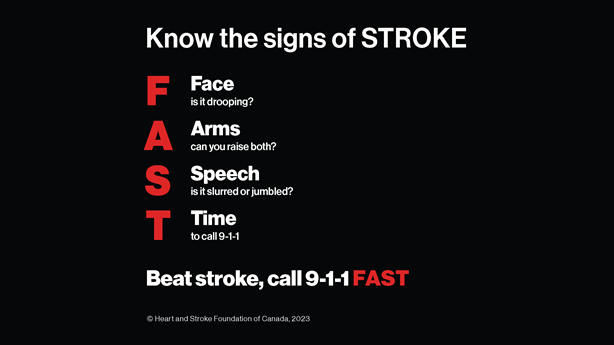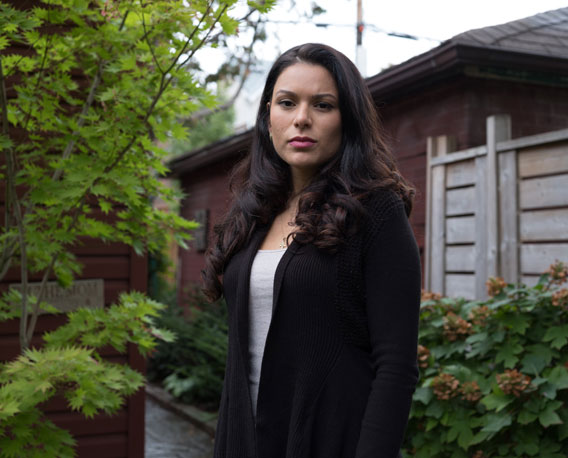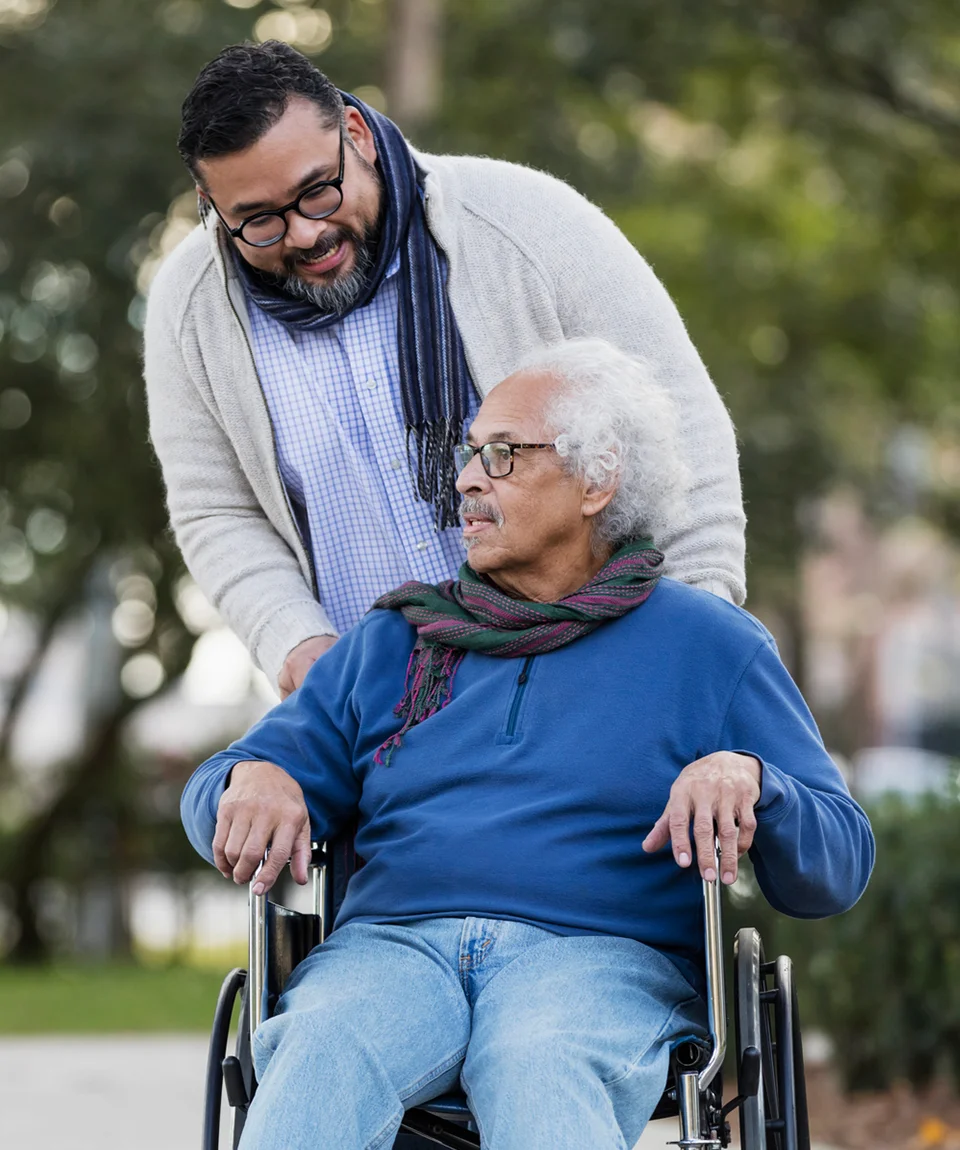The FAST signs are the most common signs of stroke and they are signs that are more likely to be caused by stroke than any other condition.
There are some additional signs of stroke that are less common.
They include:
- Vision changes - blurred or double vision
- Sudden severe headache - usually accompanied by some of the other signs
- Numbness - usually on one side of the body
- Problems with balance
What if I do not experience all of the FAST signs?
Not everyone will experience all of the signs of stroke. If you experience any of the FAST signs, call 9-1-1 immediately.

Are women’s signs different than men’s?
The signs of stroke are the same for men and women.
Do the FAST signs apply to hemorrhagic and mini-strokes (TIA)?
The FAST signs of stroke apply to ischemic, hemorrhagic, and mini-strokes, or TIA. There may be some differences in signs with each. For example, in the case of a hemorrhagic stroke, severe headache may occur in addition to some or all of the FAST signs. In the case of TIA, the signs may last for only a few minutes and usually last for less than one hour.
In all cases call 9-1-1 right away to ensure you are taken to the right hospital that provides acute stroke care.


Are doctors and paramedics aware of the FAST signs?
Awareness of the FAST signs varies by province, but through our efforts and work with the stroke care system- from paramedics through to the family doctors and home care providers, tremendous progress has been made. For example, stroke training is provided to paramedics across Canada, and many ambulances now have the FAST signs on their vehicles.
What can I expect at the hospital?
The paramedics will take you to the closest hospital with a specialized program for stroke care. They will call ahead so hospital staff is prepared for your arrival.
You should receive medical attention soon after you arrive. If you don’t, let the emergency department staff know.
Provide detailed medical history and information about past medical conditions if possible. Knowing the exact time that the stroke signs began is important, because it can help hospital staff decide what treatment is right for you. Read more about the first few days at the hospital.
Are vision changes always a sign of stroke?
Blurred vision or partial/complete vision loss may be signs that you are having a stroke. Sudden vision changes could also have other causes. If you have a sudden change in your vision, you should see a doctor and have it checked out.
What about vision changes after stroke?
After a stroke, vision may be affected in several ways, such as:
- Double vision
- Partial loss of vision in one or both eyes
- Blurred vision
- Loss of visual field (blind spots)
Your healthcare team will help you to understand the effects on your vision and ways to help improve or compensate for any visual changes and what you can expect over time.
Related information
Print or download the FAST signs of stroke here, to help save lives and spread awareness.
Sasha acted FAST and saved her mother's life. Read their story.
